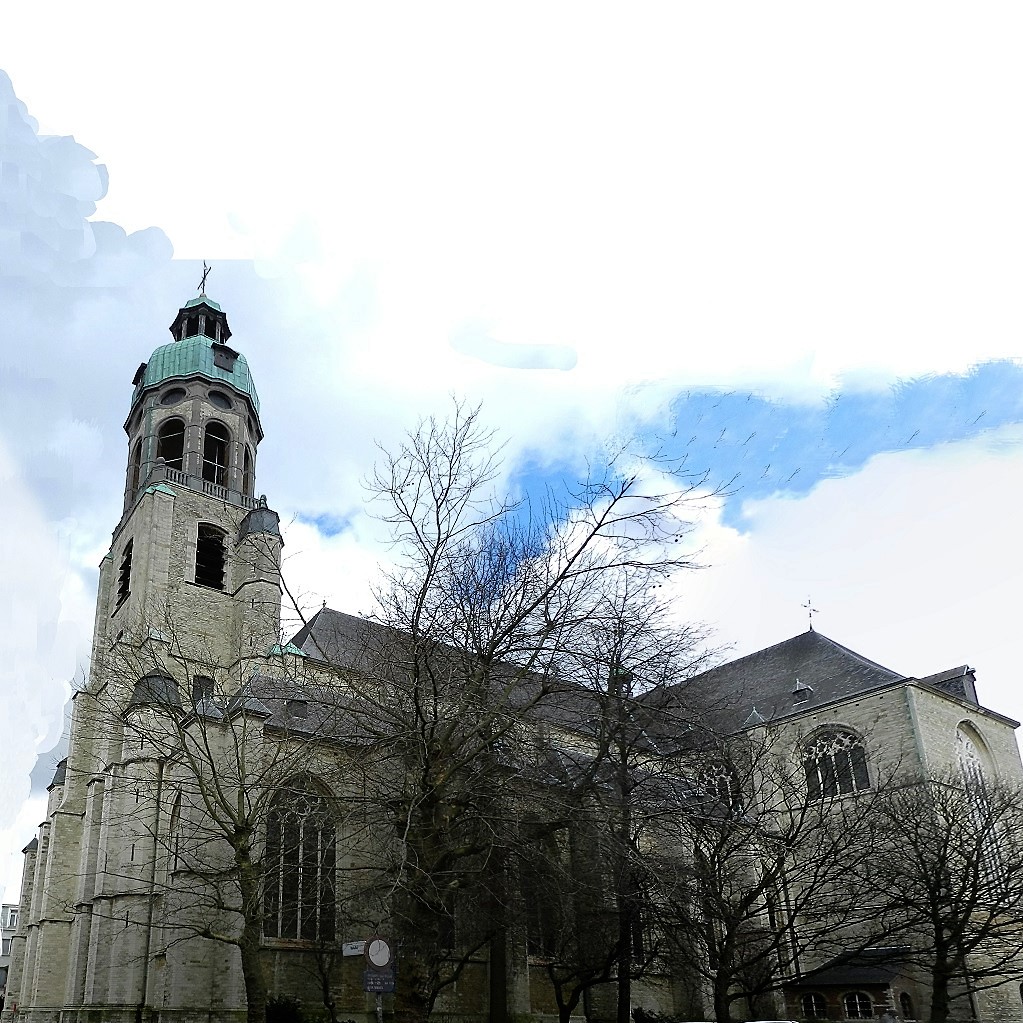Antwerp's St Andrew's Church, a revelation.
Saint Andrew's identity card
|
Birth: |
he was born a Jew, date of birth unknown; coming from the village of Bethsaida (‘house of fish’) at the shores of the lake of Gennesaret in Galilee (Matt 14:34; Jn 1:44), as did Peter, his brotherA male religious who is not a priest.. |
| FatherPriest who is a member of a religious order.: | Jona (Matt 16:17) or John (Jn 21:15) |
| Brother: | Simon (‘Peter’), also a disciple |
| Family: | according to a popular – though apocryphal – tradition: Jesus’ maternal cousin |
| Name: | Andrew, after the Greek andreia, meaning ‘masculinity’ and ‘bravery’ |
| Known as: | Protokletos or First-Called because of the story of the Calling of the First Disciples (Jn 1:35-40) |
| Civil status: | unknown |
| Profession: | fisherman in Capernaum, where he and Peter owned a house together (Mk 1:21.29) |
| Calling: | disciple; two versions 1) Matt 4:18-20; Mk 1:16-18; and 2) Jn 1:35-40. |
| Importance: | in the apostles’ listings in Matt (10:2) and Lk (6:14), Andrew is named second, immediately after Peter. Yet he is considered to be the fourth important disciple only, after the three chosen ones – Peter, John and James the Greater – who were exclusive witnesses to several distinctive moments in Jesus’ life. As such, Andrew is mentioned fourth in the listings of apostles in Mk 3:18 and in Act 1:13. Once, Andrew is mentioned as the fourth disciple who has been chosen to listen to Jesus’ teaching about the end of time in Mk (13:3). |
| Life cycle: | after Jesus’ passing, Andrew proclaimed the gospelOne of the four books of the Bible that focus on Jesus’s actions and sayings, his death and resurrection. The four evangelists are Matthew, Mark, Luke, and John. ‘Gospel’ is the Old English translation of the Greek evangeleon, which literally means ‘Good News’. This term refers to the core message of these books. in Greece. According to (Orthodox) tradition, he was the first bishopPriest in charge of a diocese. See also ‘archbishop’. – the founder, even – of the Christian community in Byzantium (the later city of Constantinople). As such, tradition underlines the parallel between Andrew and his brother Peter in Rome. |
| Death: | according to tradition, Andrew died a martyr’s death; he was crucified in Patras (Greece) in the year 66. |
| Feast Day: | 30 November, the day on which Andrew’s death is commemorated according to tradition; |
| 9 May, the translation or the movement of the saint’s relics to Amalfi in 1208. | |
| Sacred status: | martyrSomeone who refused to renounce his/her faith and was therefore killed. Many martyrs are also saints. |
| Relics: | the saint’s body in Amalfi.
According to tradition, the Byzantine emperor Thomas Palaiologos donated the relicA remnant of the body of a saint or a (part of) an object that has been in contact with a saint, Jesus, or Mary. The very first sanctuaries were built on graves of saints. Remnants of these saints were distributed to other churches and chapels. The first altars were usually the sarcophagi of the saints. Hence the custom of placing relics under the altar stone. Relics are also kept in shrines, and sometimes displayed in reliquaries. of Andrew’s head to pope Pius II in 1461. In honour of this event, Frans Duquesnoy created the famous extravert Baroque statue of St Andrew for the St. Peter’s BasilicaA rectangular building consisting of a central nave with a side aisle on each side. On the short side opposite the entrance, there is a round extension, the apse, where the altar is located. The Antwerp Saint Charles Borromeo church is based on this basilica structure. |

- Saint Andrew’s Church
- History and description
- Introduction
- The historical context
- Building history
- The patron saint
- The outbuildings
- The tower
- Spatial effect
- Saint Andrew’s identity card
- Saint Andrew in Art
- Saint Andrew in ‘his’ church
- The ancient high altar
- The current high altar
- Choir and chancel
- The choir stalls
- The celebration altar
- The Venerable Chapel
- The Mary Chapel
- The Minters’ Altar
- What is Truth?
- Holy Cross Altar
- Saint Anne’s Altar
- The pulpit
- The confessionals
- The organ
- Stained glass – southern aisle
- Stained glass – northern aisle
- The Way of the Cross
- Funeraria
- The treasury
- Bibliography

